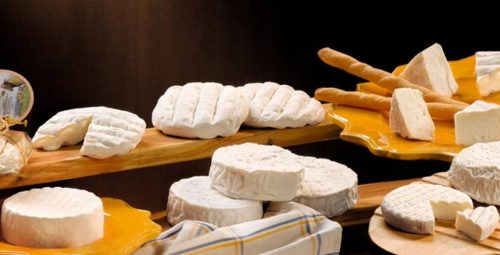Piedmontese Gastronomy: The Typical Cheeses of Monferrato
Let me tell you about one of my field trips. In Monale, Raffaele takes care of his little goats, who are a bit naughty, but with their milk, he makes award-winning cheeses!
On one of these early spring days, I got in the car to meet Raffaele, owner of the Cascina Aris farm.
Before reaching my destination, I stopped in Monale, a small town in the province of Asti with about 1,000 inhabitants.
Truly a delightful little place where sky and woods, country lanes, and nature happily coexist together!
Crowning this rural landscape is a castle, the Castello di Monale, not open to the public for guided tours but whose rooms are used as sumptuous wedding/bed & breakfast venues. A place to keep in mind for tourists looking for relaxing stays, immersed in the peace of the countryside.
I resumed, therefore, my tour destination: Cascina Aris! The little road is all curves, climbing slowly until I reach the hilltop. As soon as I got out of the car, I felt I had landed on another planet: a lovely place with a magnificent view and lots of green meadows around the farm.
Raphael welcomed me with open arms and immediately showed me around to meet all his animals…and believe me, they were pretty eager to make my acquaintance as well; they noticed right away that a “stranger” had arrived in their territory ?!
The population of the Cascina is very diverse: goats, horses, pigs, geese… and even a cute big dog!
The feeling of landing in a different place continued; it felt like being in a small Noah’s Ark without the elephants and giraffes! Raphael raises his animals with a passion, and for each species, he respects their etiology and characteristics.
Baby goats are curious animals; who would have guessed they spend their time picking on each other and fighting? And who knew goats had such strong temperaments? They have hard heads… so, Raffaele tells me, he keeps the more “lively” ones separated and in the mood to wreak havoc, but to little avail, because even after a month of estrangement, they start fighting and bleating among themselves again.
Seasonality is significant to Raphael!
Raphael follows seasonality when milking his goats; he does not force milk production out of respect for his animals and the surrounding environment. And this led him to great results: in fact, his cheeses won a lot of awards all over Italy, such as the “Rome Prize,” where the Ciuffettino cheese won first place, or the “Crude in Italia” award, where the Caciotta di Capra took first place!
The pigs are kept free so that they can roam in the woods around the Cascina. They are also fed the leftovers from the goats’ milk processing, ecology, and circular economy from 10 and praise!
Cheese Tasting
And then came the most awaited moment: tasting cured meats and cheese delights for the palate!
Raffaele showed me his small workshop in between tastings, where he creates all his delicacies: so many types of cheese for being a family farm! How much commitment and dedication, Raffaele is an excellent goat’s cheese producer with all the credentials! As I tasted all those things that were so good (and also genuine), I thought to myself, “That’s it; why did they win all those awards…,” there had to be a reason!












